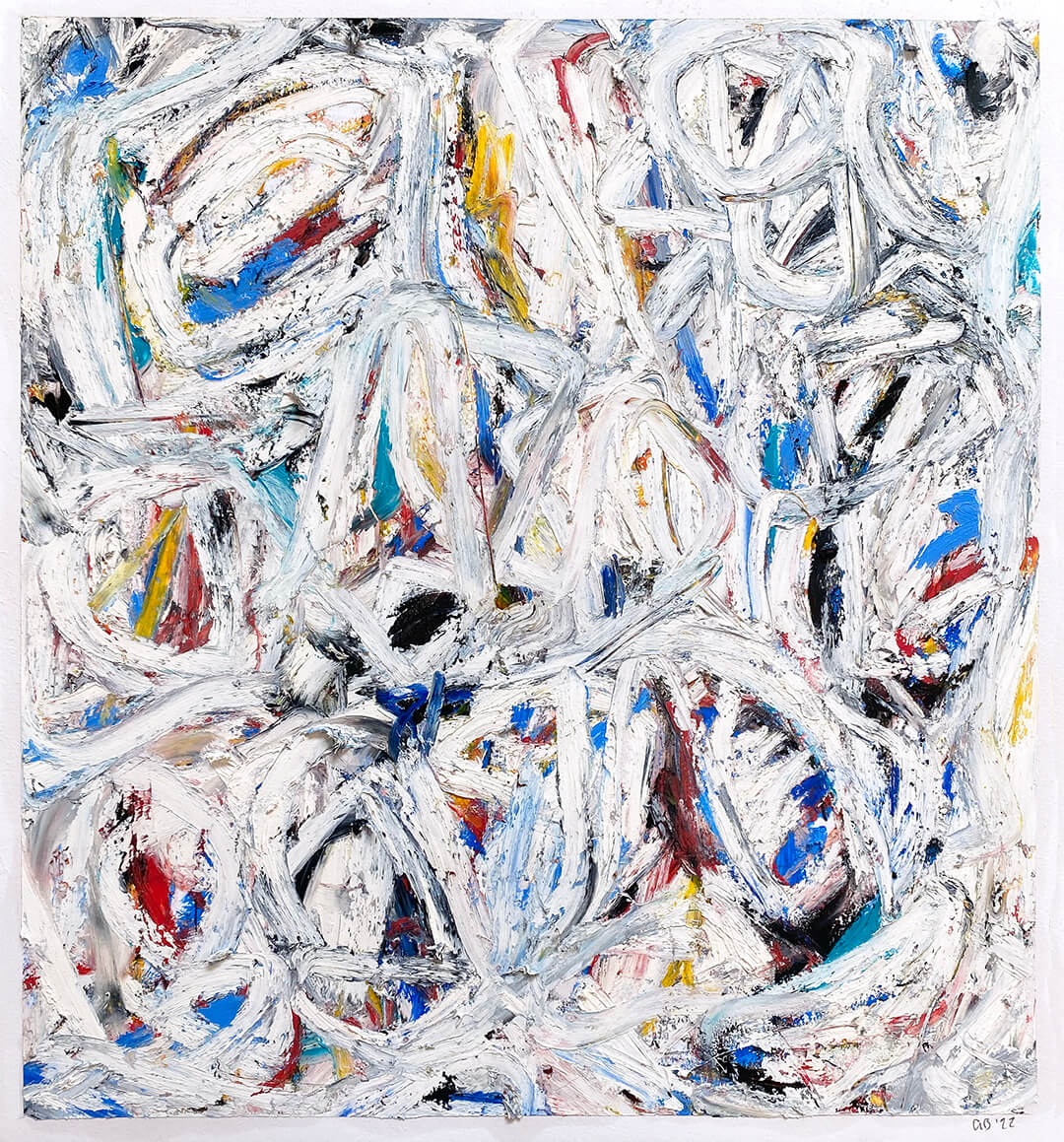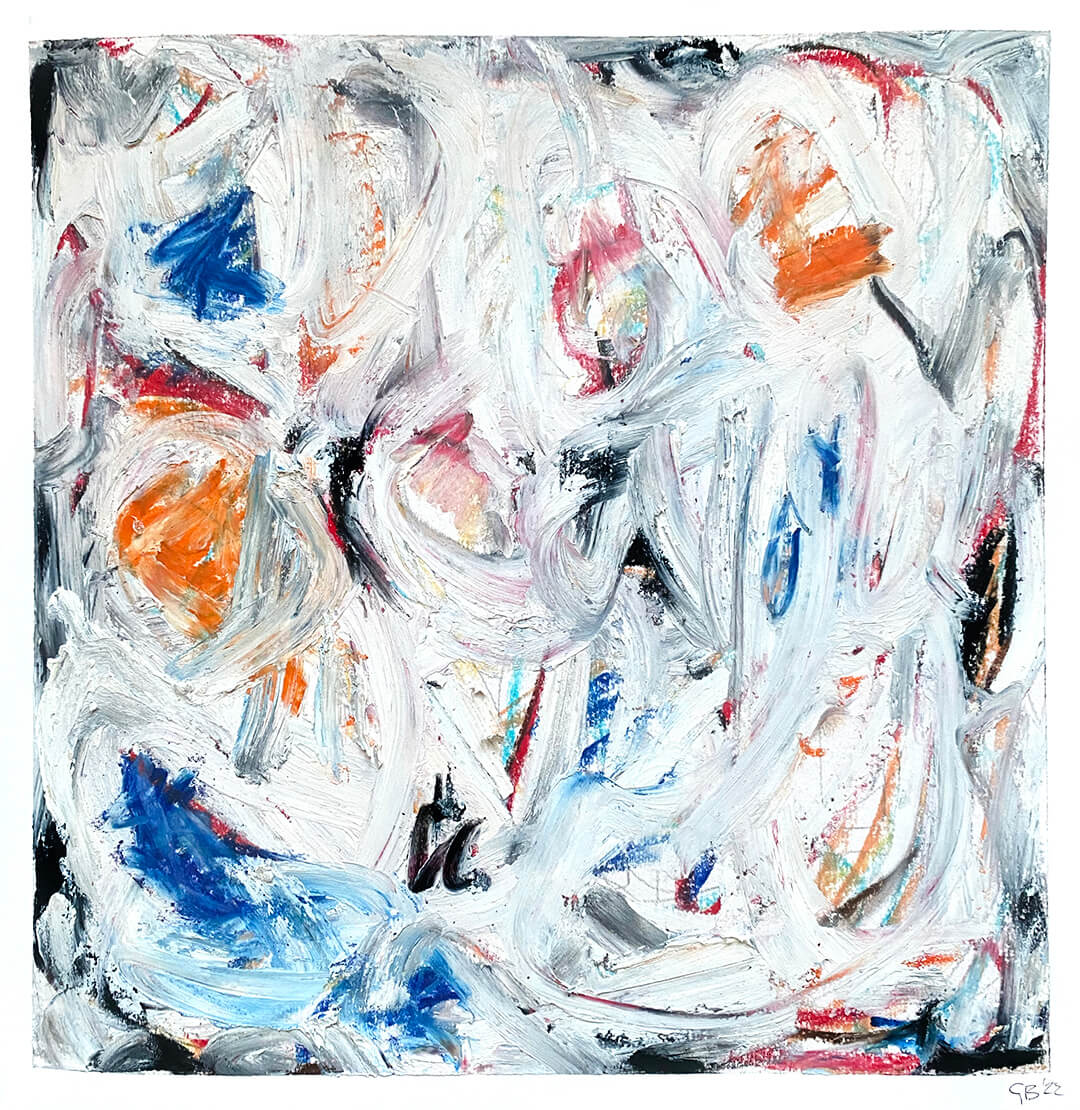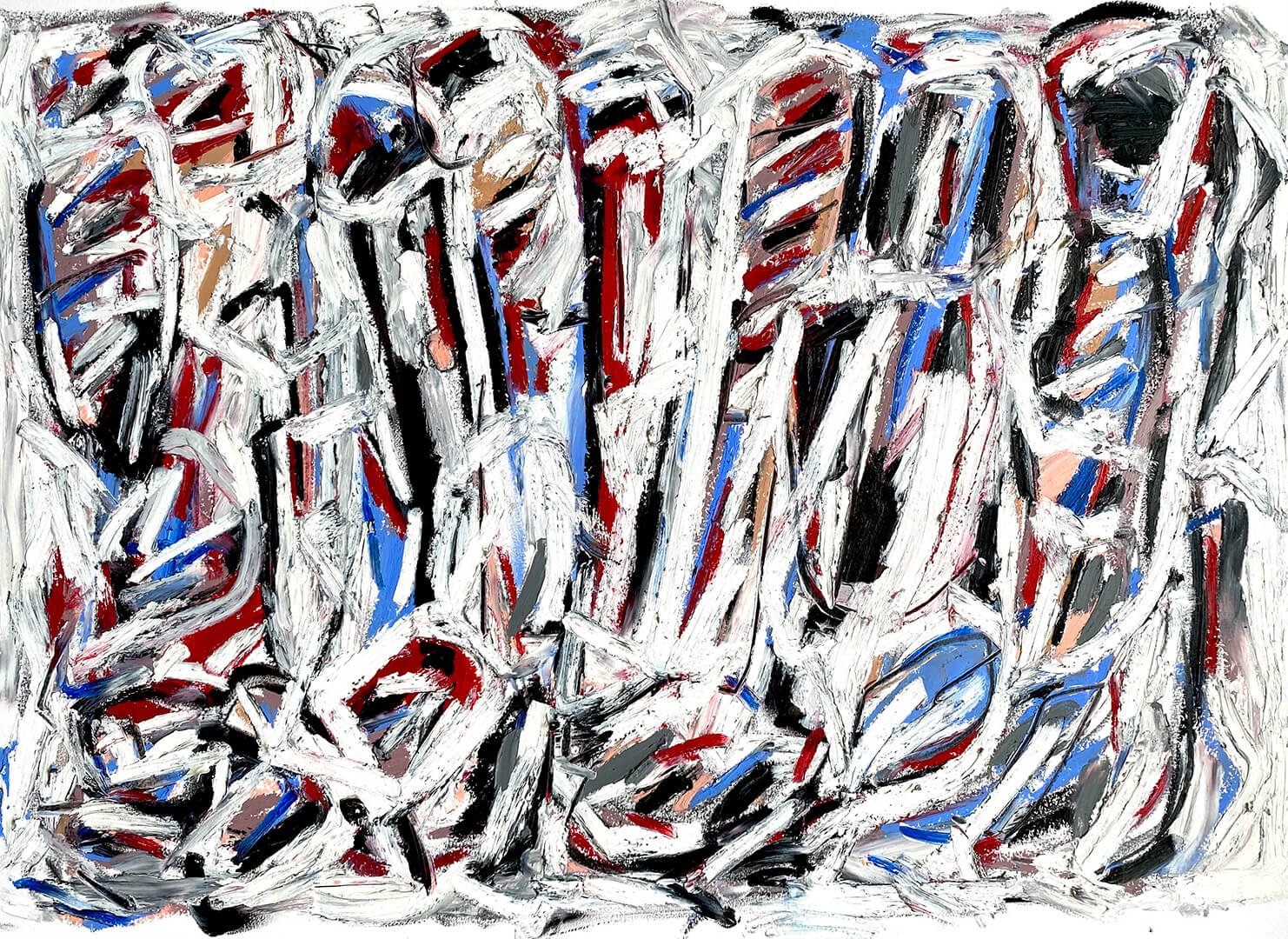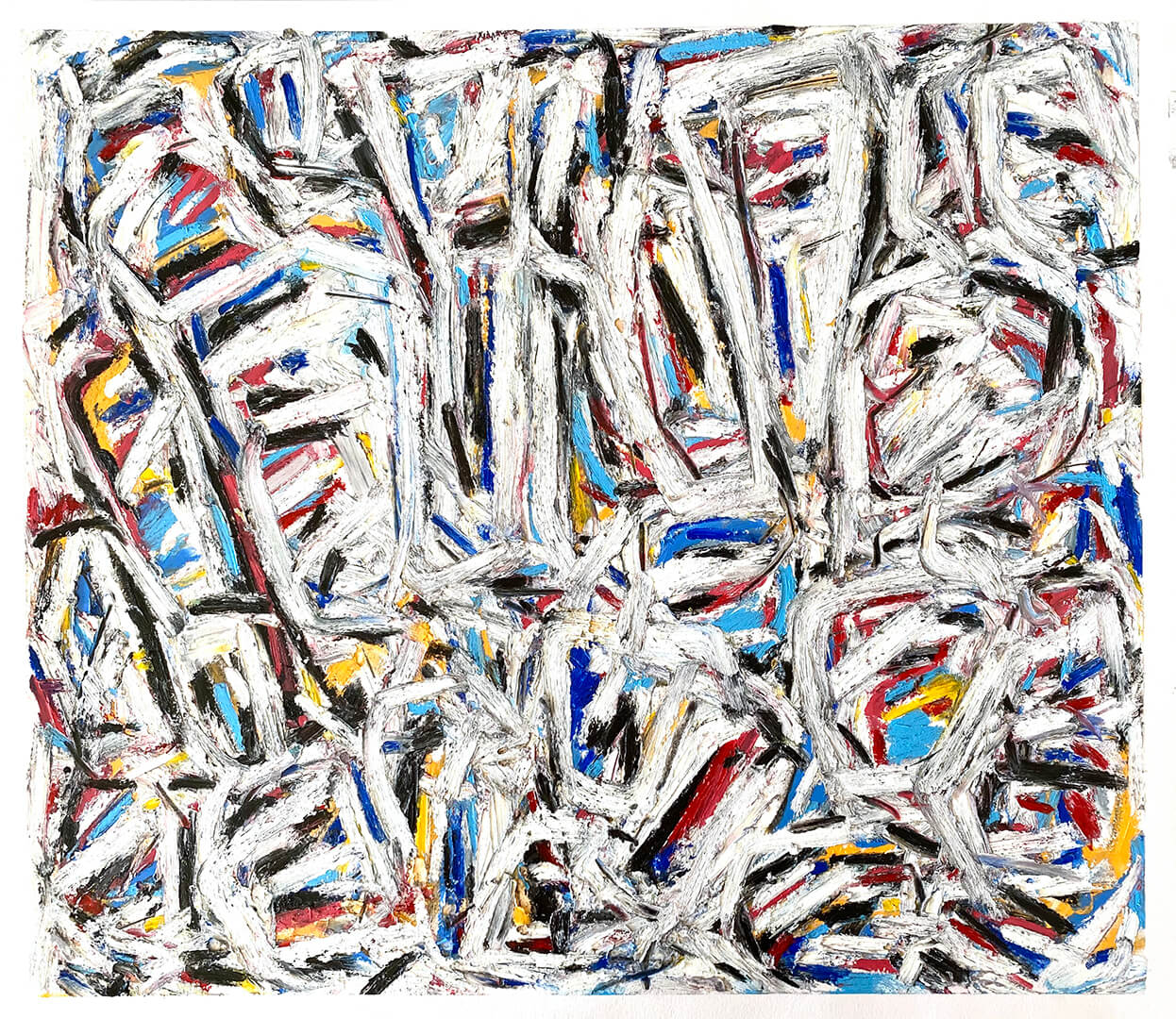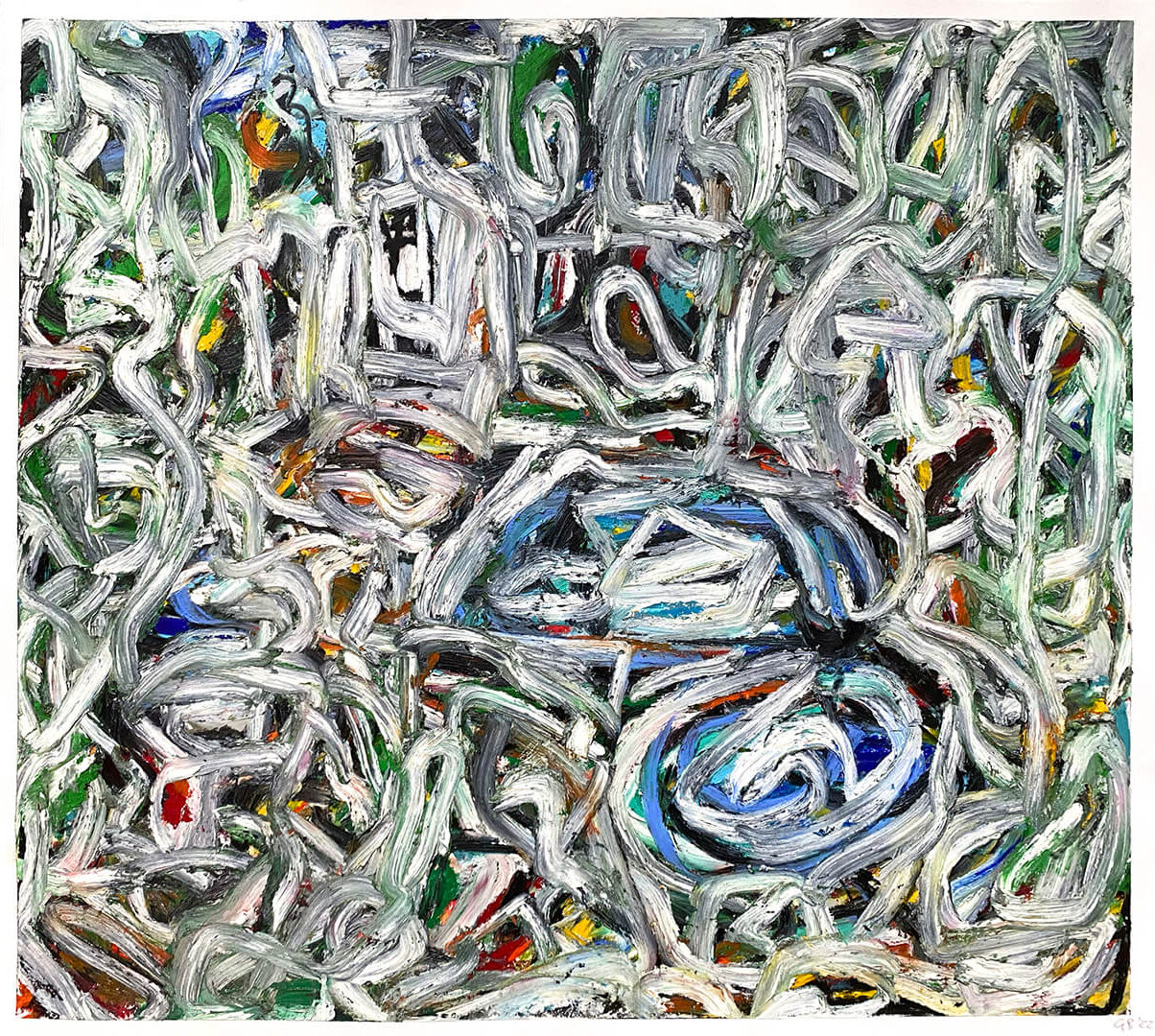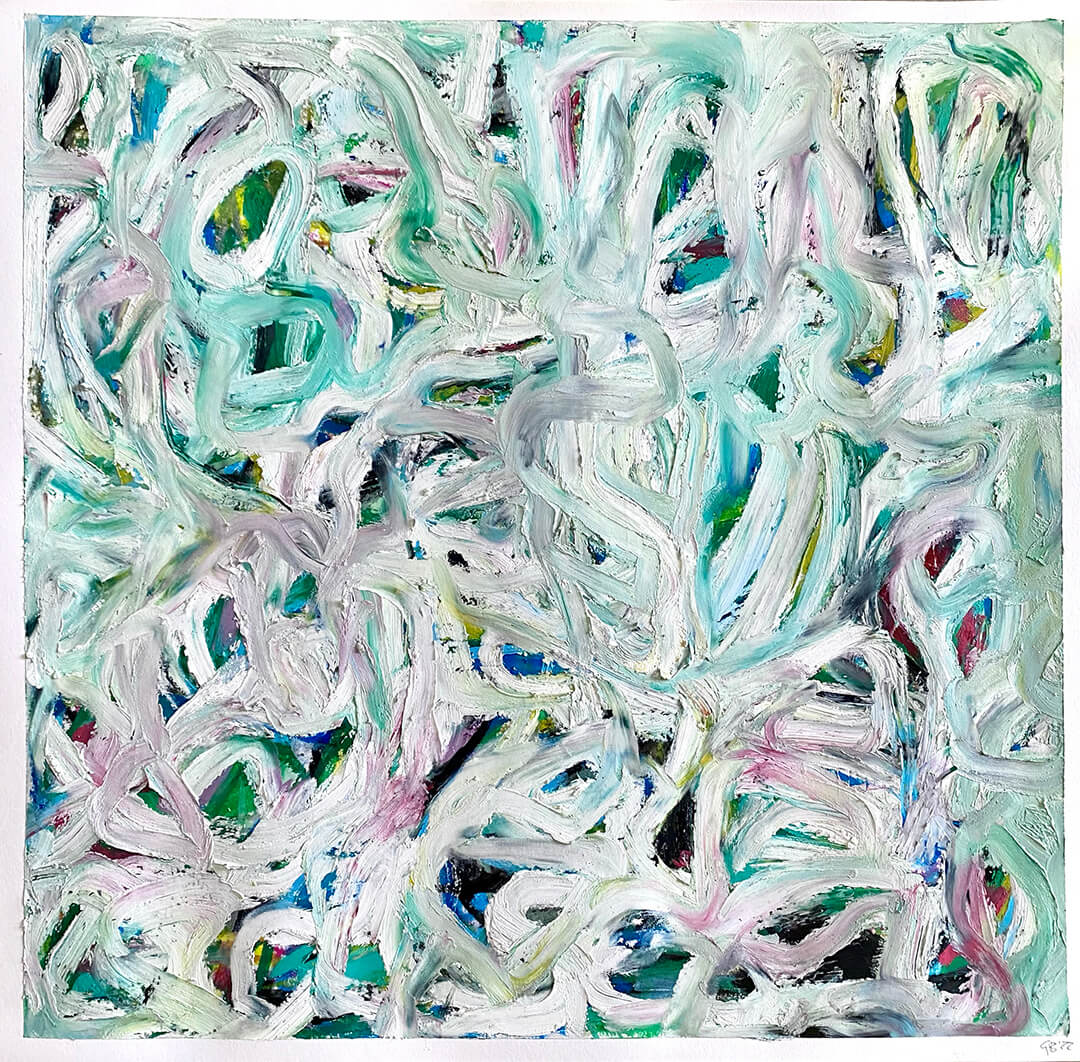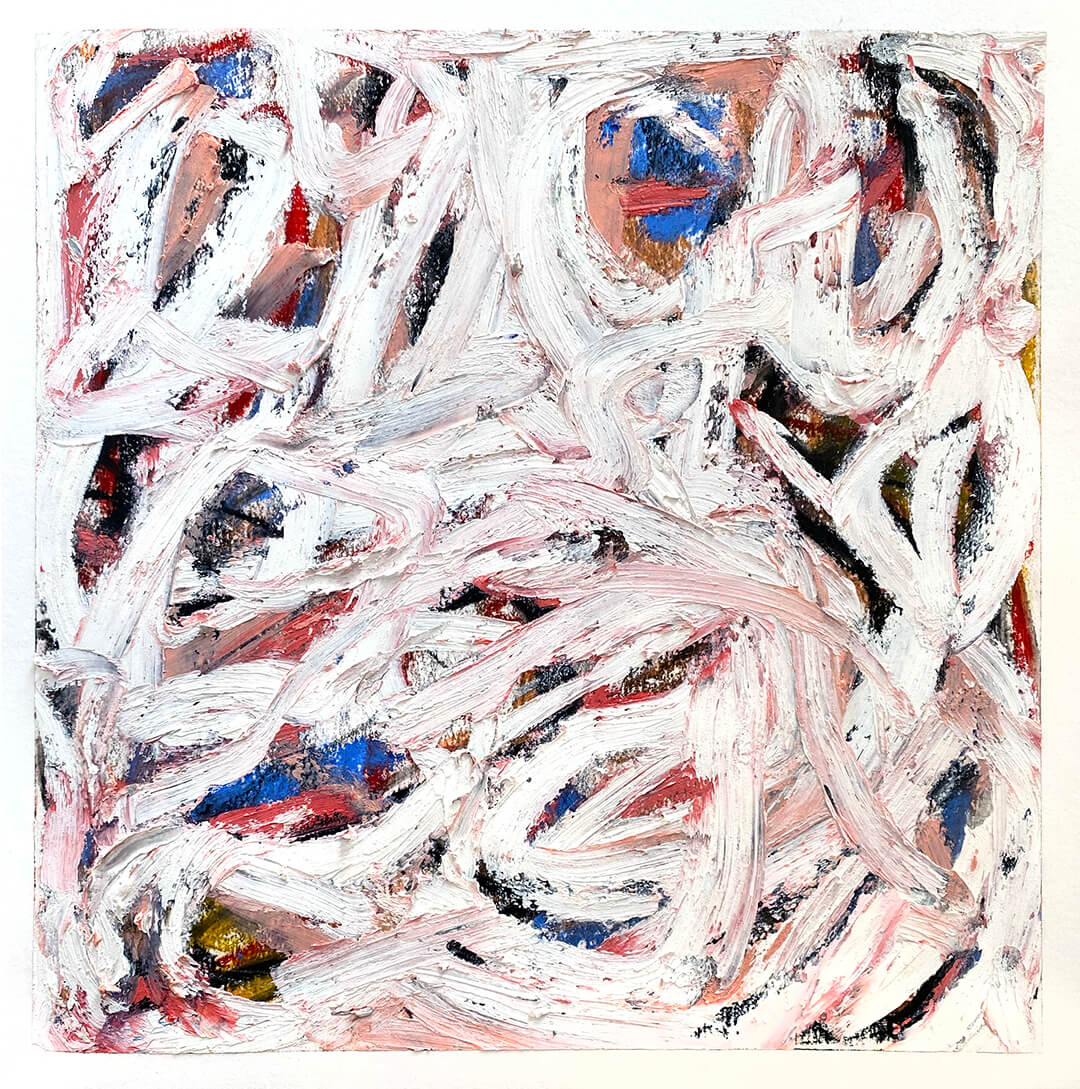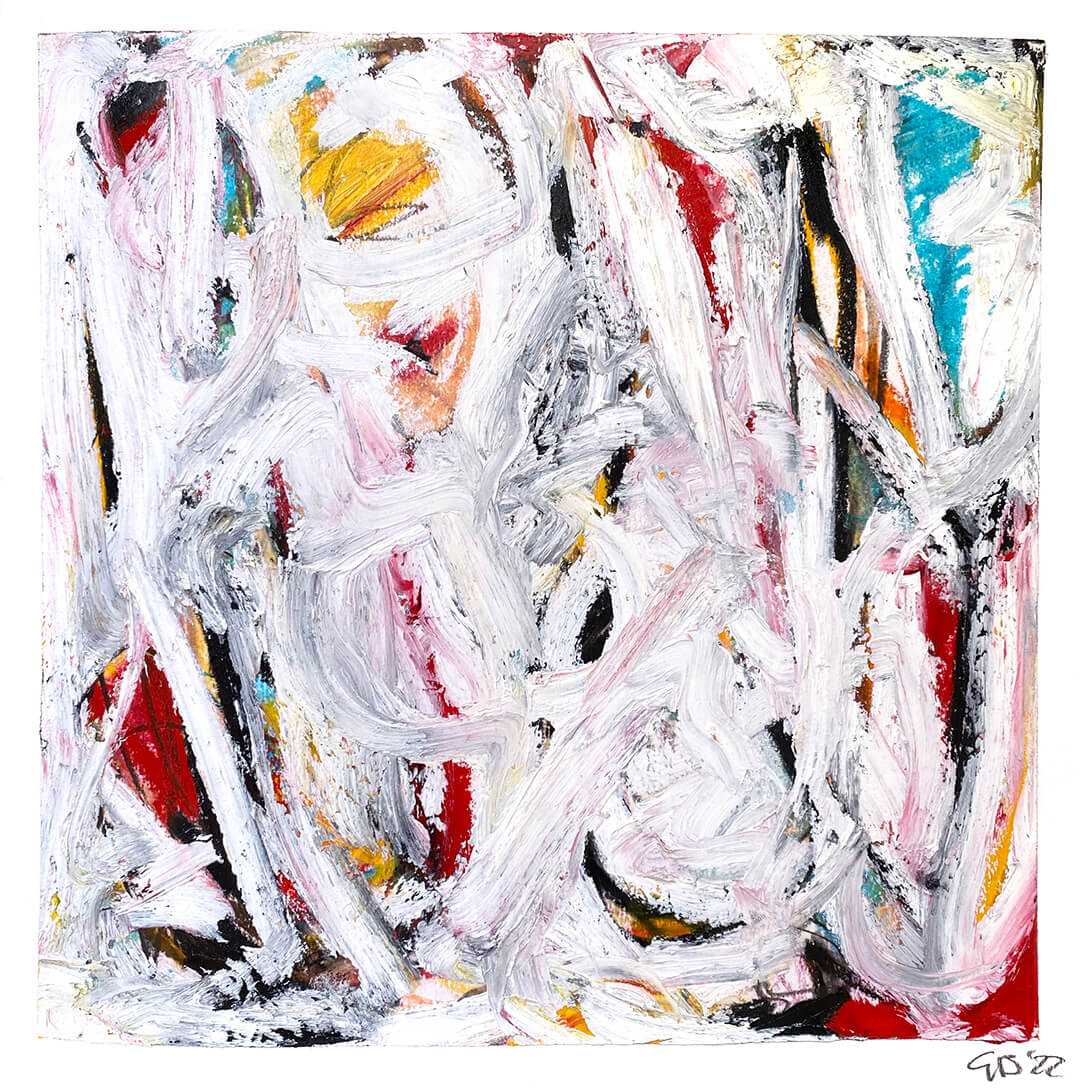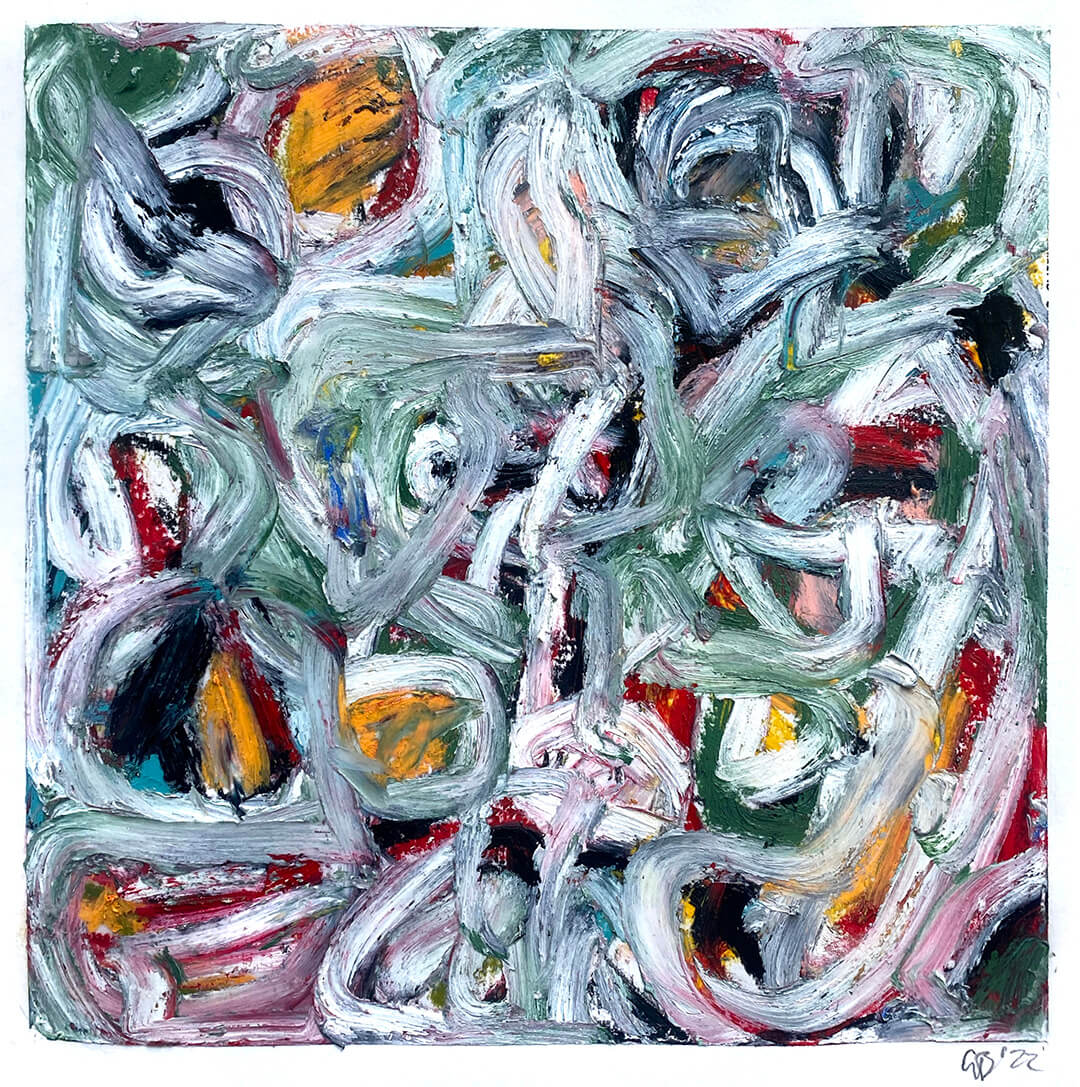I feel that artwork should, not perhaps explain its self, but at least attempt to justify its own existence. The world of Abstract art is dilute and I don’t think anyone could argue against that. Diluted not only by the shear number of creators and our over exposure to their work but also by the seemingly thin level of conceptual drivers. The genre these days seems to be largely made of void and field paintings. I understand fully this direction and it’s not to be ridiculed. In this hyper globalised sharing culture we find ourselves in, notions become pastiche as soon as they are expressed. Fashions hardly exist, other than in a way that simply expresses the absence of. Reducing art to the art object is actually a valid expression of this situation, and it’s often done wonderfully. In terms of selling power Art needs to be a beautiful object now more than ever. The realm of the canvas and what it says is no longer enough, and often not even important at all. To be commercially viable pieces should be a comfortable size for a domestic setting, well framed and with special attention paid to the border. Often the work I’m seeing is nothing but a border. I think this speaks volumes about the frantic desire for people’s work to become accepted in the physical world. Please let this object I’m creating meet with air and space and wall! It also expresses really that there isn’t a recognisable narrative occurring. Perhaps it’s as simple as painters feeling the strong desire to create but feel themselves brick walled, as so many have been since the mid 20th century, by the finality of Rothko and other artists of the late modern and minimalist movements. I’ve tried field painting. It seems so alluring but unfortunately I seem to be terrible at the ‘beautiful object’ side of artwork creation. My pieces tend to seem contrived, badly textured and meet the outside world at the canvas edge with blatant discomfort.
My work has then come full circle to it’s rambling teenage origins. It delves into complication rather than minimalism. it often destroys its self too – a symptom of the same contextual malady described above. There is no doubt a sort of self ridicule in abstract painting. Conscious or unconscious it’s terrified of taking any form too seriously; of allowing any brush stroke to be obvious. Perhaps this comes from the existential questions arising from the presence of digital art and now, god help us, AI Art. The painter seems to be hiding their hands. Hiding their humanity. It’s a lot to deal with. It’s a lot to try and forget when you pick up a brush. What do we do? Listen to old Jazz and forget we’re living in the 2020s? Surround ourselves with splattered vintage oak and books on Degas? It’s easy to retreat but that wouldn’t be helpful for the progression of art or for the progression of ourselves as artists and human beings. My solution for the paralysis? Do it right and on your own terms.
I trained as a Sculptor, hiding my forbidden tubes until the tutors clocked off at night. What I was taught though by this discipline above all else, (the only carving we did was when a tree blew down outside the school) is that staying appropriate to your concept is everything. Want to discuss waste? Fill a room with bin bags. Want to discuss sexuality? Collage with condoms. I do believe though that an integral part of carrying through concept is not only material but process. How is this thing made and why is that appropriate to your idea. It’s no different in making drawings or paintings. The action of the hand itself is an expressive part of the physical process of that artwork coming into being. It’s obviously difficult for drawing and painting materials to be appropriate to a concept unless your painting is about painting but their attributes can be. Their physical qualities but more importantly their capacities and limitations should be harnessed to your advantage. Each medium has a point of resistance to batter your head against. Also what can be combined with what, and how do these points of conflict or harmony help express the thought you’re dealing with?
Secondly, embrace context. By all means listen to Bill Evans if it gets you in the zone but remember you are working now. You are working for the now. I like to make art alongside never ending youtube videos and podcasts discussing current ideas. They needn’t have anything to do with the work but they bring me into the cultural present. Basquiat apparently used to paint in amongst coke fuelled parties of fashionable New Yorkers with numerous televisions and radios playing at once; the studio floor strewn with magazines. I think part of the reason he was so successful was this field of 80s cultural chaos he worked in and so placed his work within. The canvasses were an expression of the colour, the pace and the ideas of his time, and thus became an instant relic of it. I’ll leave how you do this up to you but don’t shy away from the bombardment our time suffers us.
I feel proud of the work I’ve shared alongside this bit of writing. Often the final result is less visually appealing than other series I’ve made but I’m contented in the fact that they feel rounded and appropriate because the process speaks of the notions. The pain of living today is there. Even the fact that they’re largely on paper is appropriate to the years of inconsistent studio space and travels that have combined lack of materials with lockdowns and foreign curfews. Some pieces still seem barely solid; telling of oil pastels melting out of their sheaths on humid nights in Turkey; wild fires destroying the landscapes nearby.
These pieces look at memory, and the ever present agony I feel for the slipping of beautiful experiences into the past. I’m interested in this as a sort of bearing of self. A diagram of, character, temperament, ego, experience etc. unique to me. I usually begin with a semi-abstract drawing in dry mediums which aims to capture the realm of a particular memory. An amalgamation of snapshots from the minds eye filling the sheet. This is then worked into to highlight key forms. Parts which stand out visually but also strike me as more important or emotive are darkened in or strengthened. I’ll keep adding to this until the space seems consistent and unified in weight and colour. I then fix this with a spray medium, often cheap hairspray bought wherever I can. This is the thoughtful layer. Expressed in a spontaneous way but with care and consideration to the sensitivies of a memory. The next step in the process is to aggressively white out the initial layer with thick white oil or oil pastel. I like to increase the size of the tool here as well, switching to a large brush, a giant Sennelier pastel, oil stick or similar. It’s important here to let myself go and allow the more liquid quality of the oil smear across the work. Although the act is destructive, it follows the rhythm and form of the background layer. What results is a sort of ghost or cloud of the memory. It’s come forth into the present as a thing of it. Strongly suggestive but obscured by time.
These drawings combine feminine and masculine energy, described in hermeticism as one of the ever present balances in nature. Hinduism teaches that feminine energy, personified as Shakti governs the more thoughtful, careful and ordered levels of existence whilst masculine energy, as personified by Shiva, governs the more impulsive and destructive forces. Finding this balance has been an illuminating part of getting to know myself as I think we’re perhaps all a combination of these poles in different ratios. Through the creative act i’m not only expressing something deeply personal and emotional, but using what I feel is both sides of my personality to do so.
These ideas aren’t important to know before looking at these artworks but acting with intention in this way has been massively rewarding and reassuring personally for my practice and I feel grounds the series. I love the fact that I’ve developed a way of capturing volumes of time or collections of memories into a single frame. More importantly however, It gives me parameters to work within whilst allowing plenty of space for a variety of initial ideas with free expression from that point on. It also offers consistencies in the final output which I have found out the hard way is key to actually selling. More over it allows me a break from the dreaded void of Abstract Art.


